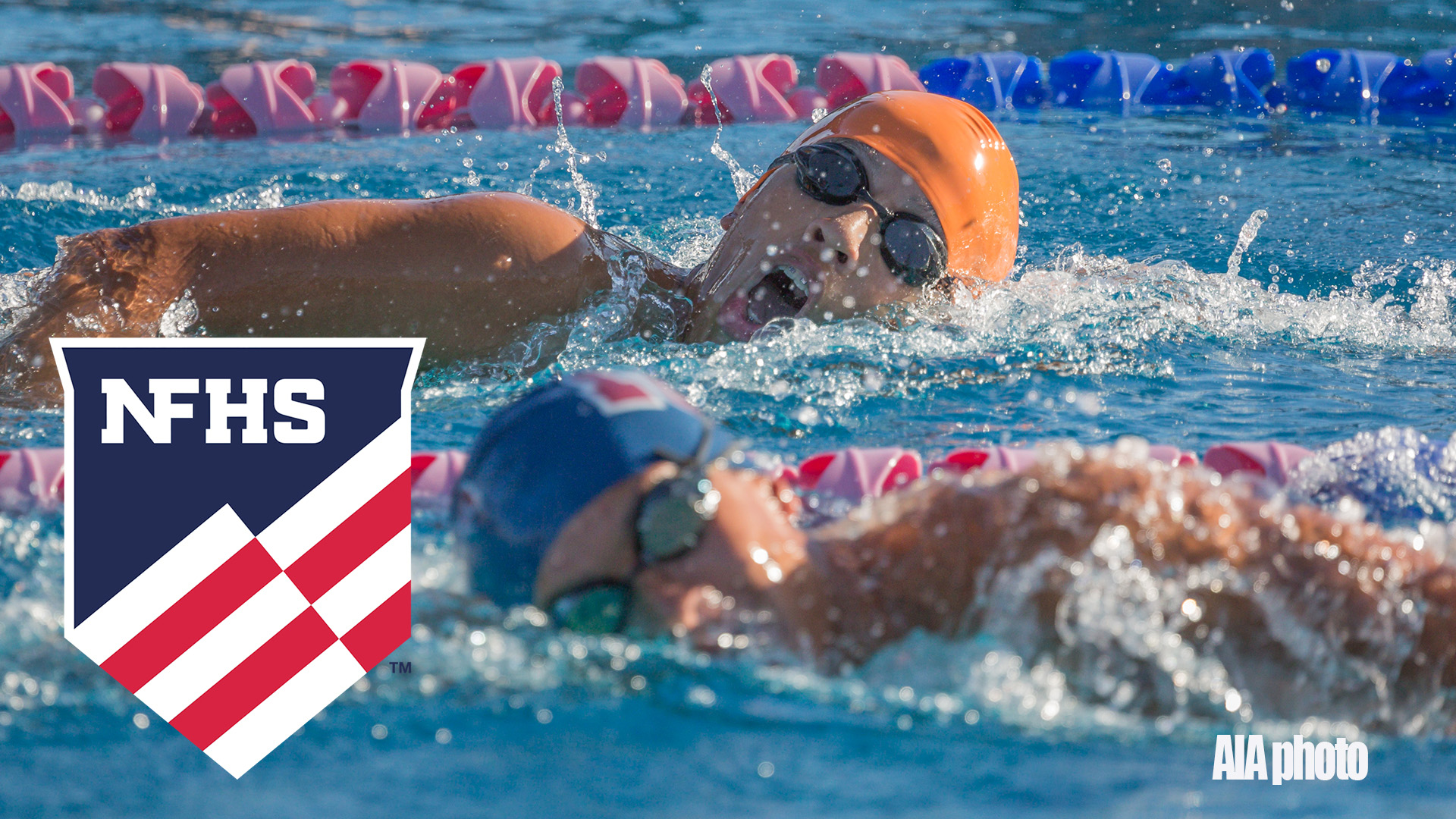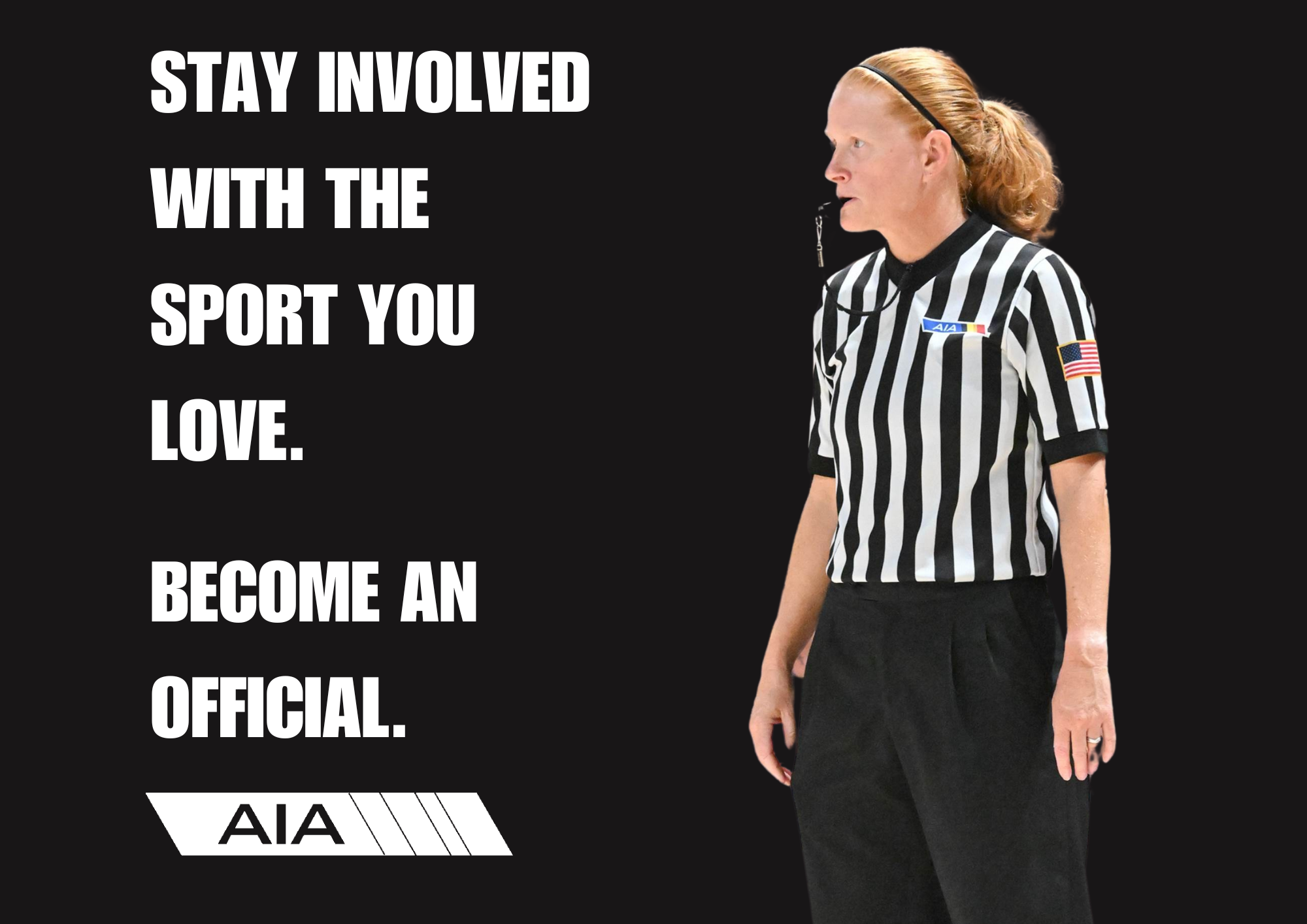Swimming stroke changes, penalty for close diving board proximity in new NFHS rules
April 13, 2023 by Seth Polansky, AZPreps365

INDIANAPOLIS, IN (April 13, 2023) — Swimming stroke changes and a new penalty for close diving board proximity stand out among the high school swimming and diving rules changes approved for the 2023-24 school year.
Risk minimization was a top priority, leading to eight rules changes brought forth by the National Federation of State High School Associations (NFHS) Swimming and Diving Rules Committee, which held its annual meeting March 19-21 at the Conrad Hotel in downtown Indianapolis. The NFHS Board of Directors approved all eight rule change submissions.
Several technical rules changes were made to breaststroke, backstroke and butterfly. “We removed rules that do not present a competitive advantage, are rarely seen today, and make sense for high school swimmers,” said Sandy Searcy, NFHS director of sports and liaison to the NFHS Swimming and Diving Rules Committee.
Backstroke swimmers are now permitted to submerge at the backstroke flags and be completely underwater at the finish due to changes in Rule 8-2-1g. The change allows the official to concentrate on the finish at the wall and aligns with national trends. The rule applies to all backstroke finishes including the medley relay and the individual medley.
Changes to breaststroke (Rule 8-2-2d-h) and butterfly (Rule 8-2-3c, e, g) provide clarity, consistency and remove elements of the turn and finish which were difficult to officiate. Alterations are not expected to provide a competitive advantage for athletes.
“Factors at the forefront of our discussions were fair play, risk minimization and awareness of national trends,” said Rod Garman, chair of the NFHS Swimming and Diving Rules Committee and assistant executive director of the Kansas State High School Activities Association.
A penalty will now be imposed if the diver’s head is too close to the diving board according to changes in Rule 9-7-4C. A penalty was already in place for when a diver hit the board. Diving referees will determine the new penalty call and should sit in line with the end of the board to see where divers enter the water in relation to the board.
“We wanted to make it clear that safety is paramount and that we have a penalty in place that elevates the divers’ and coaches’ awareness of entering the water from an appropriate distance from the board,” Searcy said. “It is important that the NFHS provide educational resources to illustrate what is too close and specify the referee’s vantage-point.”
Three diving positions were removed with changes to Rule 9-5. The committee determined that performing these dives in the straight position was too dangerous at the high school level due to the close placement of the diver’s head in relation to the board. The difficulty level was such that divers were not typically performing the dives, according to Searcy.
Finally, an editorial change was made to Rules 3-3 and 3-3-2 to clarify uniform accommodations related to suit permeability, compression and buoyancy.
A complete listing of the swimming and diving rules changes will be available on the NFHS website at www.nfhs.org. Click on “Activities & Sports” at the top of the home page and select “Swimming and Diving.”
According to the 2021-22 NFHS High School Athletics Participation Survey, swimming and diving is the 10th-most popular sport for boys with 123,208 participants in 7,831 schools, and the eighth-most popular sport for girls with 149,751 participants in 8,079 schools.
This press release was written by Olivia Jennings, coordinator of social media and communications at the NFHS.
###
About the National Federation of State High School Associations (NFHS)
The NFHS, based in Indianapolis, Indiana, is the national leadership organization for high school sports and performing arts activities. Since 1920, the NFHS has led the development of education-based interscholastic sports and performing arts activities that help students succeed in their lives. The NFHS sets direction for the future by building awareness and support, improving the participation experience, establishing consistent standards and rules for competition, and helping those who oversee high school sports and activities. The NFHS writes playing rules for 17 sports for boys and girls at the high school level. Through its 50 member state associations and the District of Columbia, the NFHS reaches more than 19,500 high schools and 12 million participants in high school activity programs, including more than 7.6 million in high school sports. As the recognized national authority on interscholastic activity programs, the NFHS conducts national meetings; sanctions interstate events; offers online publications and services for high school coaches and officials; sponsors professional organizations for high school coaches, officials, speech and debate coaches, and music adjudicators; serves as the national source for interscholastic coach training; and serves as a national information resource of interscholastic athletics and activities. For more information, visit the NFHS website at www.nfhs.org.
MEDIA CONTACTS:
Bruce Howard, 317-972-6900
Director of Publications and Communications
National Federation of State High School Associations
bhoward@nfhs.org
Chris Boone, 317-972-6900
Assistant Director of Publications and Communications
National Federation of State High School Associations
cboone@nfhs.org
Nate Perry, 317-972-6900
Manager of Media Relations
National Federation of State High School Associations
nperry@nfhs.org
Olivia Jennings, 317-972-6900
Coordinator of Social Media and Communications
National Federation of State High School Associations
ojennings@nfhs.org


